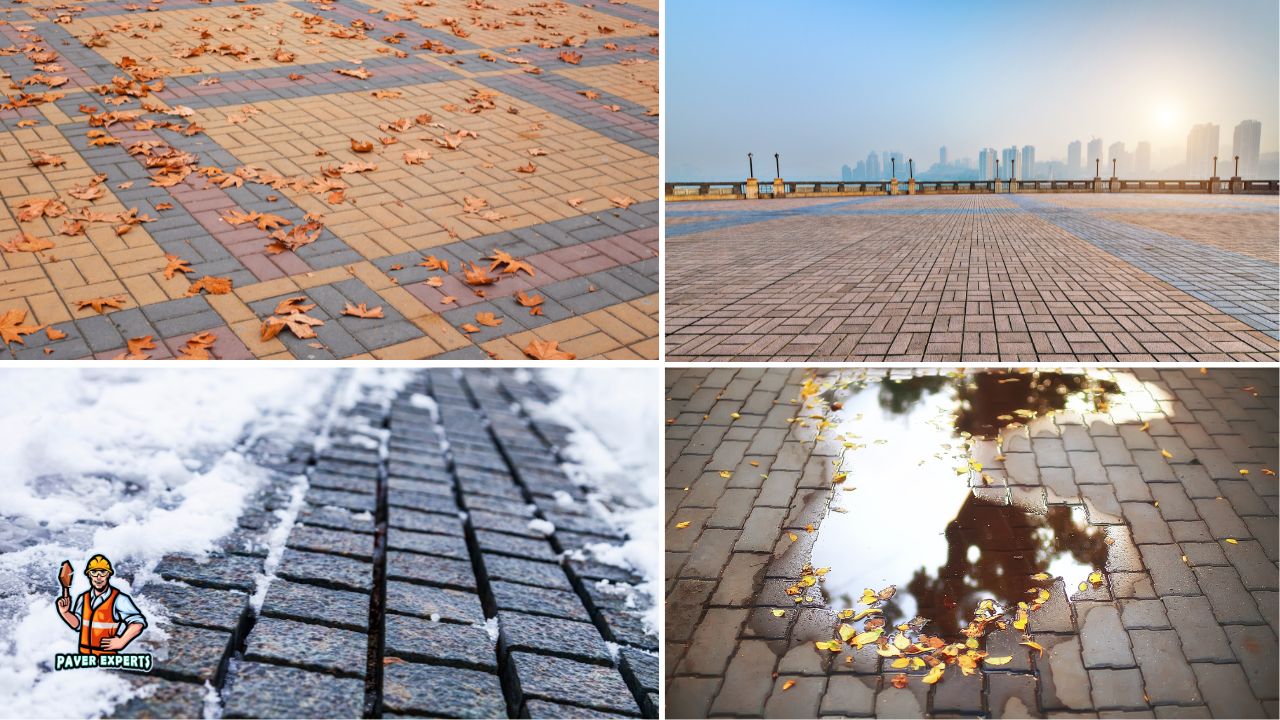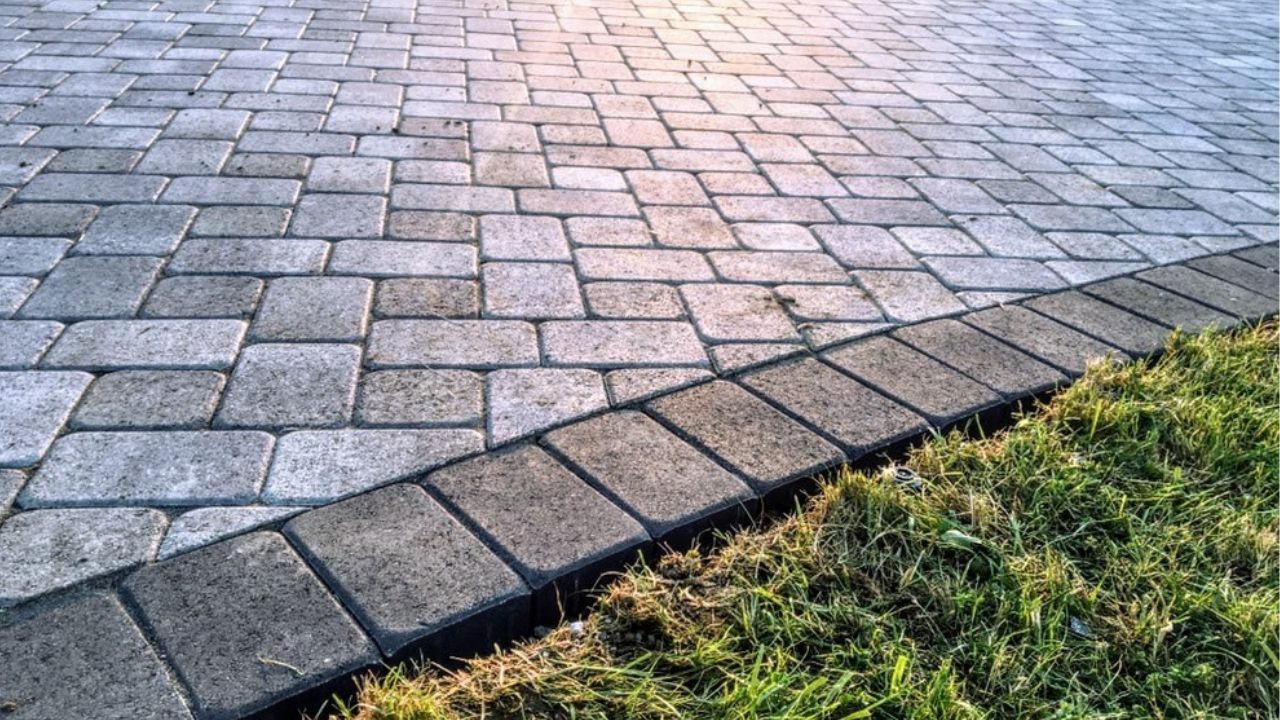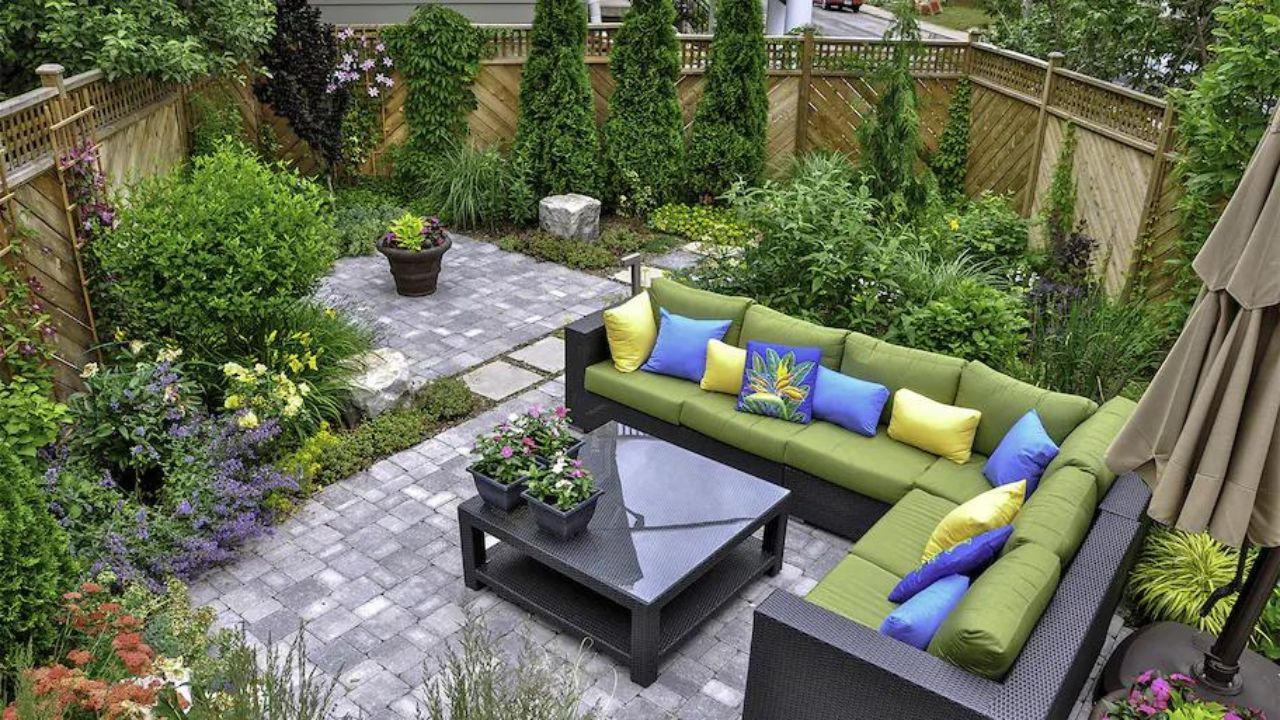Reviving Your Outdoor Space Paver Restoration Tips
Rediscover the allure of your outdoor haven with our comprehensive guide on paver restoration. Unveil the art of revitalizing worn-out pathways and weathered patios, as we share expert tips to breathe new life into your outdoor space. Elevate your home’s curb appeal while creating a welcoming ambiance for relaxation and entertainment. Explore our rejuvenating techniques today and embark on a journey to transform your outdoor environment into a stunning oasis.
Assessing the State of Your Pavers
Your outdoor space is an extension of your home, a place where you relax, entertain, and make memories. However, over time, the elements can take a toll on your once-pristine pavers, leaving them worn, discolored, and uneven. The key to reviving the charm of your outdoor haven lies in the meticulous assessment of your pavers’ current condition.
By understanding the state of your pavers, you can lay the foundation for a successful restoration journey that will breathe new life into your landscape.

Close Examination
Start your paver restoration project by giving your outdoor space a careful and thorough examination. Walk around the area and observe the condition of each paver. Look for signs of cracks, chips, or other damage. Note any areas where pavers appear to have shifted or sunk, creating uneven surfaces. Taking the time to visually inspect each paver will help you identify areas that require attention.
Assessing Color and Texture
Pay attention to the color and texture of your pavers. Fading, discoloration, and loss of texture are common signs of weathering. Pavers that have lost their vibrant hues can make your outdoor space appear dull and lifeless. By assessing color and texture, you can determine whether your pavers would benefit from techniques like staining and sealing to restore their original beauty.
Checking Grout and Joints
The spaces between your pavers, often filled with sand or grout, play a significant role in maintaining their stability. Check for gaps or erosion in these joints. Over time, weather conditions can cause sand to wash away or grout to degrade. Replenishing these materials is essential for maintaining the integrity of your paver installation.
The Impact of Wear and Tear
Consider how your outdoor space is used. High-traffic areas like walkways and patios are more prone to wear and tear. Pavers in these areas may show more significant signs of deterioration. Understanding the impact of foot traffic and usage patterns will help you prioritize restoration efforts and allocate resources effectively.
Professional Consultation
While a DIY assessment is a great starting point, seeking the advice of a professional paver expert is invaluable. Experts can provide a detailed analysis of your pavers, identify underlying issues that might not be immediately apparent, and offer tailored recommendations for restoration. Their expertise can guide you towards the most effective and efficient restoration plan.
Assessing the state of your pavers is a critical step on the path to restoring the beauty and functionality of your outdoor space. Through careful examination and consideration, you can lay the groundwork for a successful restoration journey. Whether you choose to embark on a DIY project or enlist the expertise of professionals, a thorough assessment sets the stage for a transformation that will breathe new life into your outdoor oasis.
Frequently Asked Questions
Restoring pavers can be a DIY project for smaller repairs and cleaning. However, larger restoration tasks, extensive damage, or intricate patterns might require professional expertise to ensure optimal results and safety.
Regular maintenance is key. Cleaning pavers every few months and sealing them annually (or as recommended by the manufacturer) helps protect against wear, stains, and fading, ensuring they remain vibrant and durable.
Small cracks can often be repaired using specialized filler or adhesive. However, larger or structural cracks may necessitate replacement. Assess the severity and consult professionals if you’re unsure.
Staining enhances color vibrancy and texture, while sealing provides protection against UV rays, stains, and moisture. Together, they extend the life of your pavers and maintain their aesthetic appeal.
Regular maintenance is key to preventing weed growth. Consider using joint sand stabilizers or sealants to inhibit weed germination and maintain the integrity of the joints.
Choosing the Right Cleaning Techniques
Your pavers are the foundation of your outdoor sanctuary, but over time, dirt, grime, and stains can dull their once-vibrant appearance. Choosing the appropriate cleaning techniques is crucial for not only revitalizing the aesthetic appeal of your pavers but also prolonging their longevity. In this section, we’ll guide you through the process of selecting the right cleaning methods to ensure your outdoor space remains a true oasis.
Understanding Paver Material
Different types of pavers, such as concrete, natural stone, or brick, require specific cleaning approaches. Before you begin cleaning, identify the material your pavers are made from. Each material responds differently to various cleaning agents and methods. Ensuring compatibility between the cleaning technique and the paver material is essential to avoid damage.
Regular Sweeping and Rinsing
Regular maintenance can significantly extend the lifespan of your pavers. Start with the basics: sweeping away debris and giving the surface a thorough rinse with a garden hose. This simple practice prevents dirt and dust buildup, maintaining the pavers’ appearance and preventing potential erosion caused by particles grinding against the surface.
The Power of Pressure Washing
For deep cleaning, pressure washing can be highly effective. Adjust the pressure setting to suit the paver material and the degree of soiling. However, exercise caution—excessive pressure can dislodge pavers, damage grout, or erode surfaces. Maintain a safe distance and angle while pressure washing, and avoid directing the nozzle directly at the joints between pavers.
Addressing Stains and Discoloration
Stains from oil, grease, rust, or organic matter can be challenging to remove. When dealing with stains, consider using specialized cleaners formulated for the type of stain and paver material. Test a small, inconspicuous area before applying the cleaner to the entire surface. If a stain persists, seeking professional advice is recommended.
Avoiding Harsh Chemicals
While it might be tempting to resort to harsh chemicals for tough stains, exercise caution. Some chemicals can damage pavers, alter their color, or harm nearby vegetation. Opt for eco-friendly and paver-safe cleaning solutions whenever possible.
Preventative Measures
Preventing future staining is just as important as cleaning existing stains. Consider applying a paver sealant after cleaning. Sealants provide a protective barrier that repels stains and enhances the pavers’ natural beauty. Be sure to choose a sealant appropriate for your paver material and follow the manufacturer’s instructions.
Professional Cleaning Services
For intricate or extensive cleaning needs, professional paver cleaning services can provide specialized equipment and expertise. Professionals can ensure a thorough and safe cleaning process, especially for larger areas or heavily stained surfaces.
Choosing the right cleaning techniques is paramount to maintaining the elegance of your pavers. By understanding your paver material, adopting regular maintenance practices, and using appropriate cleaning methods, you can preserve the allure of your outdoor space and enjoy a stunning landscape for years to come.
Want to add value to your property? Choose our professional paver installation services for a high-quality upgrade that will last for years to come.
Repairing Cracked and Damaged Pavers
Assessing the Extent of Damage
Begin by examining the extent of the damage. Small cracks can sometimes be a result of natural settling and may not require immediate repair. However, larger cracks or pavers that have shifted significantly should be addressed promptly to prevent further deterioration.
Replacing Individual Pavers
For isolated damage, replacing individual pavers is often the most straightforward solution. Carefully remove the damaged paver using a chisel and hammer, ensuring you don’t disturb the surrounding pavers. Replace it with a new paver of the same type and size, securing it in place with sand or grout.
Addressing Uneven Surfaces
If pavers have shifted, causing uneven surfaces, re-leveling is necessary to restore the integrity of your pathways or patios. Remove the affected pavers, add or remove sand as needed to achieve proper leveling, and then re-install the pavers. Using a rubber mallet, gently tap them into place, ensuring they are flush with the surrounding pavers.
Repairing Small Cracks
For small cracks, consider using a specialized paver repair adhesive or filler. Clean the crack thoroughly, removing dirt and debris. Apply the adhesive or filler according to the manufacturer’s instructions, then smooth the surface to match the surrounding pavers. Allow ample time for curing before using the area.
Tackling Larger Cracks
Larger cracks may require more extensive measures. If the crack is due to underlying soil issues, you might need to address the soil’s stability before repairing the pavers. Consult with a professional if you’re uncertain about the cause of the crack or the appropriate repair approach.
Re-Sealing After Repairs
After repairing cracked or damaged pavers, consider re-sealing the entire area to ensure a uniform appearance and provide additional protection against future damage. Sealants can enhance the pavers’ color, repel moisture, and inhibit weed growth between joints.
Repairing cracked and damaged pavers is essential to preserving the safety and beauty of your outdoor space. Whether you’re tackling small cracks or addressing more significant damage, following these repair methods will help you restore your pavers to their original glory and ensure the lasting allure of your landscape.
The Art of Re-Leveling Uneven Surfaces
Uneven surfaces not only compromise the visual appeal of your outdoor space but can also lead to safety hazards. Re-leveling pavers is a crucial skill to master in maintaining a beautiful and functional landscape. In this article, we’ll guide you through the art of re-leveling uneven surfaces, helping you restore the harmony and safety of your outdoor oasis.
Identifying Uneven Areas
Begin by identifying areas where pavers have shifted, causing uneven surfaces. This might be evident through gaps, tilting pavers, or noticeable height differences.

A keen eye and careful inspection will help you pinpoint the sections that require re-leveling.
Gathering Tools and Materials
Before starting the re-leveling process, gather the necessary tools and materials. You’ll likely need a rubber mallet, a straight-edge, a trowel, sand, and a level. Having everything at your disposal will streamline the process and ensure a smoother experience.
Removing and Adjusting Pavers
Carefully remove the pavers from the uneven area. If necessary, use a rubber mallet to gently tap the pavers back into place. Add or remove sand beneath the pavers to achieve the desired level. Using a level, ensure that the pavers are aligned and even with the surrounding ones.
Tamping and Compacting
Once the pavers are properly aligned, use a rubber mallet to tap them into place. This process, known as tamping, ensures that the pavers settle securely into the sand bed. Additionally, use a plate compactor to further compact the surface, creating a stable foundation for the pavers.
Joint Sand and Final Checks
After re-leveling the pavers, refill the joints with sand. Sweep the sand into the gaps, making sure it settles evenly. This not only stabilizes the pavers but also inhibits weed growth. Finally, perform a visual and tactile inspection, ensuring that the surface is even and safe to walk on.
Re-leveling uneven surfaces is an art that requires precision and patience. By following these steps and techniques, you can master the skill of re-leveling pavers, ensuring your outdoor space is not only visually appealing but also a safe and enjoyable environment for you and your loved ones.
Enhancing Color and Texture with Stain and Seal
Over time, exposure to the elements can cause your pavers to lose their vibrancy and texture. Staining and sealing your pavers is a transformative process that not only revitalizes their appearance but also protects them from further deterioration. In this article, we’ll delve into the art of enhancing color and texture with stain and seal, helping you achieve a stunning and long-lasting outdoor landscape.
Understanding the Benefits
Learn about the myriad benefits of staining and sealing your pavers. From restoring faded colors to protecting against UV rays, staining and sealing can significantly extend the lifespan of your pavers while enhancing their visual appeal.
Selecting the Right Stain
Choosing the right stain is essential for achieving the desired color enhancement. There are various stain options available, each offering a unique finish. Whether you prefer a natural look or want to experiment with different shades, selecting the appropriate stain is a crucial decision.
Preparing the Surface
Proper preparation is key to a successful staining and sealing process. Clean the paver surface thoroughly to remove dirt, debris, and any previous coatings. This ensures that the stain and sealant adhere evenly and produce consistent results.
Applying the Stain
Discover techniques for applying the stain evenly and effectively. Whether using a brush, roller, or sprayer, ensure the stain reaches all areas of the pavers. Take care to follow the manufacturer’s instructions for application and drying times.
Sealing for Longevity
Sealing the stained pavers is the final step to lock in the rejuvenated color and texture. The sealant adds a protective layer, guarding against moisture, stains, and UV damage. Choose a sealant that suits your paver material and desired finish.
Enhancing color and texture with stain and seal is a rewarding endeavor that breathes new life into your pavers. By understanding the benefits, selecting the right products, and following proper application techniques, you can achieve a landscape that not only captures the eye but also stands the test of time.
Reviving Grout and Joint Integrity
The grout and joints between your pavers play a critical role in maintaining the stability and aesthetics of your outdoor space. Over time, weather and wear can cause these elements to deteriorate, compromising both the integrity and appearance of your landscape. In this article, we’ll guide you through the process of reviving grout and joint integrity, ensuring a solid foundation for your paver installation.
Assessing Grout and Joint Condition
Begin by assessing the condition of the grout and joints. Look for signs of erosion, cracking, or gaps between the pavers. These issues can lead to shifting pavers, uneven surfaces, and potential hazards. Identifying problem areas is the first step toward effective restoration.
Cleaning and Clearing
Before proceeding with grout and joint restoration, thoroughly clean the area. Remove dirt, debris, and any loose particles from the gaps between the pavers. A clean surface ensures that new grout adheres properly and provides a seamless finish.
Choosing the Right Grout
Selecting the appropriate grout is crucial for a successful restoration. Opt for a grout that matches the existing color and texture of your pavers. Additionally, consider using a grout that is specifically designed for outdoor use and can withstand the elements.
Grout Application
Applying grout requires precision and care. Use a trowel to spread the grout evenly into the gaps between the pavers. Make sure the grout fills the spaces completely to prevent future erosion. Wipe away excess grout from the paver surfaces before it dries.
Sealing the Joints
To enhance the longevity of the grout and joints, consider applying a joint sealant after the grout has fully cured. The sealant creates a barrier against moisture, preventing water infiltration and minimizing the risk of erosion.
Regular Maintenance
Maintaining the integrity of grout and joints requires ongoing care. Regularly inspect the joints for signs of wear or damage. Promptly address any issues to prevent them from worsening and to ensure a solid foundation for your pavers.
Reviving grout and joint integrity is essential for maintaining a stable and visually appealing paver landscape. By assessing the condition, using the right products, and following proper application techniques, you can restore the strength and beauty of your paver installation, ensuring its longevity and your enjoyment for years to come.
Seasonal Maintenance for Paver Longevity
Maintaining the longevity and allure of your paver landscape requires more than just initial installation – it demands consistent care throughout the year. With each passing season, different challenges arise, affecting the appearance and structural integrity of your pavers. In this article, we’ll explore the importance of seasonal maintenance and provide tips to ensure your outdoor space remains a captivating retreat for years to come.
Spring: Post-Winter Recovery
As winter thaws, inspect your pavers for any damage caused by freezing and thawing cycles.

Repair cracks, uneven surfaces, and displaced pavers promptly. A thorough cleaning to remove winter debris and the application of a joint stabilizing sealant can prepare your pavers for the warmer months ahead.
Summer: Guarding Against Wear
Summer brings increased foot traffic and potential damage from the sun’s UV rays. Regularly sweep your pavers to prevent dirt buildup, which can lead to erosion and discoloration. Apply a UV-resistant sealant to shield your pavers from sun-induced fading and maintain their vibrant hues.
Fall: Leaf and Debris Management
Falling leaves and organic debris can mar the appearance of your pavers and promote weed growth between joints. Regularly sweep and clear your pavers to prevent debris from settling. Consider applying a joint sand stabilizer to inhibit weed growth and maintain the integrity of your paver installation.
Winter: Preparing for Cold Weather
Before winter arrives, it’s essential to prepare your pavers for the challenges of freezing temperatures. Seal your pavers with a water-repellent sealant to prevent water from seeping into the pores and freezing, which can cause cracks. Elevate the longevity of your pavers by addressing potential issues before they escalate.
By adopting a comprehensive seasonal maintenance routine, you can safeguard the beauty and durability of your paver landscape year-round. Embrace each season as an opportunity to enhance and protect your outdoor haven, ensuring that it continues to be a source of pride and relaxation for you and your loved ones.
DIY vs. Professional Restoration
When it comes to restoring the beauty and functionality of your paver landscape, you have two primary options: tackle the project yourself or enlist the expertise of professional paver restoration services. Each approach has its advantages and considerations. In this article, we’ll guide you through the factors to weigh when deciding between DIY restoration and hiring professionals.
Skill and Expertise
Consider your level of experience and knowledge in paver restoration. DIY projects may be suitable if you have experience working with pavers and possess the necessary skills. On the other hand, complex issues or large-scale projects might require the expertise of professionals.
Time and Commitment
Restoring pavers can be time-consuming. Evaluate the time you can dedicate to the project. DIY restoration might take longer due to the learning curve and potential trial-and-error. Professionals, however, can complete the restoration more efficiently, freeing up your time for other activities.
Cost Analysis
Determine your budget for paver restoration. While DIY might seem cost-effective initially, consider expenses for tools, materials, and potential mistakes. Professional services come with a price, but they often provide a comprehensive package that includes expertise, tools, and guaranteed results.
Project Complexity
Evaluate the complexity of the restoration project. DIY might be suitable for minor repairs, cleaning, and simple tasks. However, complex issues such as extensive damage or intricate patterns might require the precision and equipment that professionals offer.
Long-Term Results
Consider the longevity of the results. DIY projects may lack the durability and finish of professional work. Professionals often use high-quality materials and techniques that ensure long-lasting restoration. If you’re looking for lasting results, professional services might be the more reliable choice.
Risk Management
Factor in potential risks associated with DIY projects, such as mistakes, damage to pavers, or personal injury. Professionals are equipped with the knowledge and safety measures to mitigate risks and ensure a safe and successful restoration.
Ultimately, the decision between DIY and professional restoration depends on your goals, experience, budget, and the scale of the project. By carefully considering these factors, you can make an informed choice that aligns with your preferences and ensures the optimal restoration of your paver landscape.
Inspiring Paver Patterns and Design Ideas
Choosing the right paver pattern and design can transform your outdoor space into a work of art. From intricate mosaics to contemporary geometrics, the possibilities are endless. In this article, we’ll take you through a journey of captivating paver patterns and design ideas to ignite your creativity and help you craft a landscape that reflects your unique style.
Classic Herringbone Elegance
The herringbone pattern is a timeless choice that combines form and function. Its interlocking arrangement provides stability while creating an elegant visual appeal.

Opt for this pattern to add a touch of traditional sophistication to your pathways or patios.
Versatile Basket Weave
The basket weave pattern offers a versatile and inviting design. By alternating pairs of rectangular pavers, you can create a cozy and intricate texture that’s perfect for intimate outdoor seating areas or welcoming walkways.
Contemporary Geometric Flair
Embrace modern aesthetics with geometric paver patterns. Hexagons, triangles, and other shapes can be combined to form dynamic and eye-catching designs. These patterns are ideal for making a bold statement in your outdoor space.
Enchanting Circular Motifs
Circular paver patterns evoke a sense of movement and flow. Create inviting gathering spaces with circular patios, or add visual interest to large expanses by incorporating circular designs into your pathways.
Natural Stone Elegance
If you’re drawn to the rustic charm of natural stone, consider irregular or random patterns. These patterns mimic the organic arrangement of natural stones, creating a unique and authentic look that blends seamlessly with nature.
Artistic Mosaic Masterpieces
Mosaic paver patterns are a canvas for your creativity. Craft intricate designs using pavers of varying colors and shapes. From floral motifs to intricate landscapes, mosaic patterns add a touch of artistry to your outdoor oasis.
Visual Illusion with Diagonals
Diagonal paver patterns can visually elongate your outdoor space, making it feel larger and more dynamic. Experiment with diagonal designs to add depth and intrigue to your pathways and patios.
Rustic Cobblestone Charm
Capture the charm of old-world streets with cobblestone patterns. These irregularly shaped pavers create a rustic and inviting atmosphere that complements various architectural styles.
Mixing Materials for Contrast
Combine different paver materials to create contrast and visual interest. Mix concrete pavers with natural stone for a textured and captivating look that stands out.
Minimalist Elegance with Linear Designs
For a clean and contemporary look, opt for linear paver patterns. These patterns use straight lines to create a sense of order and simplicity, making them ideal for modern landscapes.
Unleash your imagination and explore these inspiring paver patterns and design ideas. Whether you lean towards classic elegance, modern flair, or artistic expression, the right paver design can transform your outdoor space into a reflection of your personal style.
Conclusion
Reviving your outdoor space through paver restoration is a journey that goes beyond mere maintenance – it’s an investment in the beauty and functionality of your landscape. By assessing the state of your pavers, choosing the right cleaning techniques, repairing cracks, enhancing color and texture, and addressing grout and joint integrity, you’ve embarked on a transformative path.
Remember, each paver restoration tip plays a crucial role in the overall revitalization of your outdoor oasis. From assessing the damage to choosing the best techniques for each season, your commitment to these steps will yield stunning results that you and your loved ones can enjoy for years to come.
As you navigate the complexities of paver restoration, consider your unique goals and preferences. Whether you embark on a DIY adventure or seek professional expertise, the key lies in understanding your landscape’s needs and nurturing it accordingly. With dedication, care, and a touch of creativity, your outdoor space will flourish as a haven of beauty, relaxation, and cherished memories.
Let Us Help Our Paver Contractors
Check out the video
Service Locations
SERVICE AREA
Serving Our Community
TESTIMONIALS
What Our Customers Say






Visit Citys in Florida
Miami, the Magic City, is a vibrant metropolis known for its beautiful beaches, colorful art deco architecture, and lively nightlife. South Beach, with its iconic Ocean Drive and trendy beach clubs, is a magnet for sun-seekers and party-goers. Explore Little Havana for a taste of Cuban culture, indulge in delicious cuisine, and visit the world-class museums and galleries. Miami’s unique blend of cultures and energetic atmosphere make it a must-visit destination.
Orlando is synonymous with fun and entertainment, thanks to its world-famous theme parks. Walt Disney World Resort, Universal Studios, and SeaWorld Orlando draw families and thrill-seekers from around the globe. Beyond the theme parks, Orlando offers excellent shopping, dining, and outdoor activities, making it a perfect destination for all ages.
The Everglades National Park is a unique and vast ecosystem that protects the largest tropical wilderness in the United States. With its swamplands, mangroves, and diverse wildlife, including alligators and endangered species, it offers an unforgettable experience for nature enthusiasts. Explore the park through airboat tours, hiking trails, and ranger-led programs to discover the beauty and importance of this delicate ecosystem.







